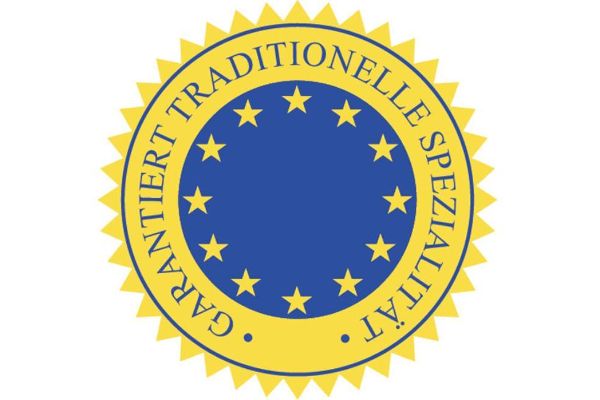Traditional specialities guaranteed

Many products are obtained using traditional raw materials or a traditional method. The protection of these products is regulated by Regulation (EU) no 1151/2012.
Regulation (EU) no 1151/2012 of the European Parliament and of the Council of 21 November 2012 on quality schemes for agricultural products and foodstuffs (OJ L 343, 14.12.2012, p. 1) contains the requirements for the registration of a traditional speciality guaranteed in the Union Registry kept by the European Commission.
It entered into force on 3 January 2013 and replaces Regulation no 509/2006, which had regulated this area until that time. The designations registered according to Regulation no 509/2006 are transferred into the new system and are considered protected according to Regulation no 1151/2012.
Presently, three Austrian designations are protected.
Which authority is in charge?
Federal Ministry of Social Affairs, Health, Care and Consumer Protection, Radetzkystraße 2, 1031 Vienna, phone: 01/711 00-0.
What is protected (object of protection)?
Protection is granted for names of traditional products having special characteristics (traditional specialities guaranteed), if these names have been traditionally used to refer to the product concerned (for example mozzarella) or identify the specific character of the product (for example hay milk) (Article 18).
The product must either
- be produced using traditional raw materials or
- be characterised by a traditional composition or
- be characterised by a traditional mode of production.
The mode of production of the product is included in a "specification” which describes the product and determines the mode of production.
Registration have the effect of protecting the name itself, which means that a product may only be designated with the protected name if it complies with the specification.
If the name protected as traditional speciality guaranteed is also used in another country for comparable products which, however, do not comply with the mode of production of the product specification, it may be provided that the traditional specialities guaranteed have to be accompanied by the claim ‘made following the tradition of’, followed by the name of the country xy.
What does “specific character” mean?
‘Specific character’ relates to the characteristic production attributes which distinguish a product clearly from similar products of the same category (Article 3).
What does “traditional” mean?
‘Traditional’ relates to the usage of the name, the raw materials and the mode of production for a period that allows transmission between generations. This period is to be at least 30 years (Article 3).
How is protection achieved (procedure for the granting of protection)?
The procedure (Article 49 and the following) starts with the lodging of the application for registration at the Federal Ministry of Social Affairs, Health, Care and Consumer Protection (BMSGPK) by the producer group. The BMSGPK scrutinises the application to check whether protection of the name is justified and, if the result of the scrutiny is favourable, forwards the application to the European Commission. The favourable decision of the BMSGPK and the specification are published.
If the European Commission shares the opinion of the national authority, the name is published in a European Commission regulation (Official Gazette, L series) and in a registry of the Commission.
Before the European Commission takes its final decision, the name and the specification are published in the Official Journal of the European Union, C series. This publication is the start of an opposition procedure (Article 51). Within a period of 3 months any natural or legal person having a legitimate interest may raise objections against the intended registration, if any of the grounds listed in Regulation no 1151/2012 (Article 21) apply.
What is a specification?
The ‘specification’ (Article 19) defines the product (including production method), describes the elements establishing the product’s special nature and traditional character, and includes information on the control of compliance with the specification (control body).
How are traditional specialities guaranteed identified?
The indication “traditional speciality guaranteed (or the corresponding abbreviation “TSG”) and the European logo on the label show that the designation is the name for a traditional speciality guaranteed which is protected according to the provisions of Regulation no 1151/2012.
As a matter of fact these indications and the logo may only be used if the product meets all requirements set out in the specification (including the verification by the control body indicated in the specification).
How is compliance with the specification verified?
Compliance with the product specification is verified by national authorities or by accredited product certification bodies.
In Austria, section 3 para. 2 pt. 1 of the law on the implementation of EU quality schemes (“EU-Qualitätsregelungen-Durchführungsgesetz”, EU-QuaDG, Federal Law Gazette No 130/2015), provides for the verification of compliance with specifications by private accredited control bodies that must have been authorised by the Provincial Governor.
As the way of verifying compliance with the specification is part of the product specification, the group applying must develop a control system already before filing the application and must give the name of the control body in the specification.
Links
Information on Regulation no 1151/2012 is also available on the homepage of the European Commission. In the eAmbrosia database the names applied for and protected can be called up. The individual specifications are not offered, however, as they are to be published by the relevant Member States only.
Advice and assistance in the preparation of applications is offered by the association Serviceverein für geschützte Herkunftsbezeichnungen für Lebensmittel (SVGH): Andreas Cretnik, office@svgh.at (Phone: 0664/882 489 87).
For questions concerning Regulation no 1151/2012, please contact sabine.prichenfried@bml.gv.at (phone: 01/71100 602144).